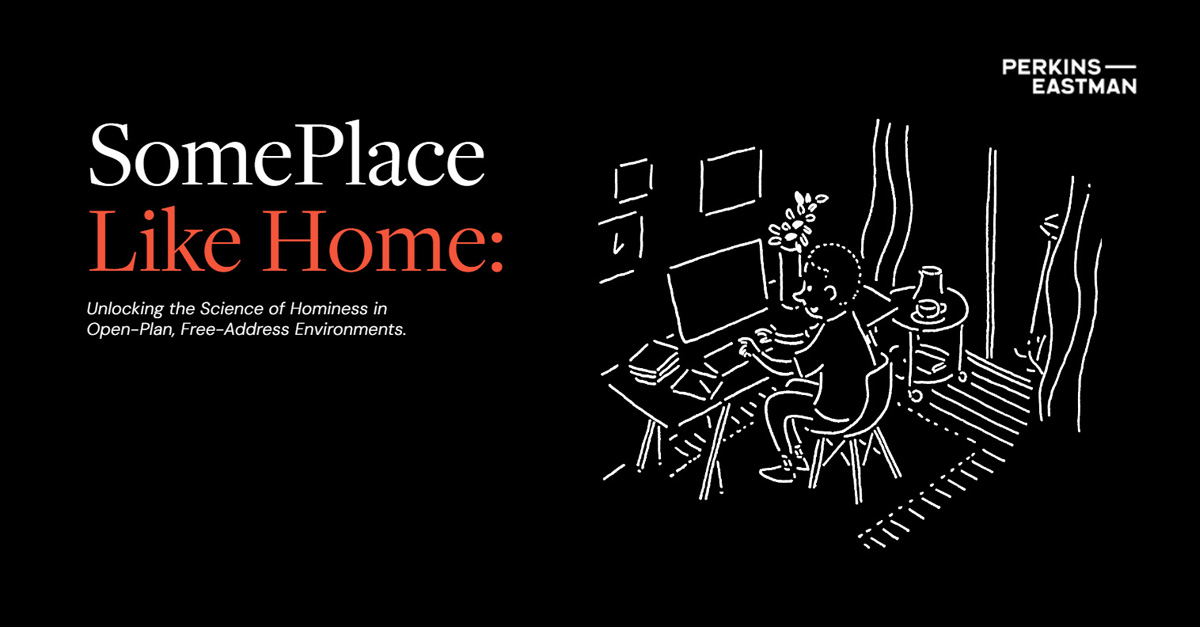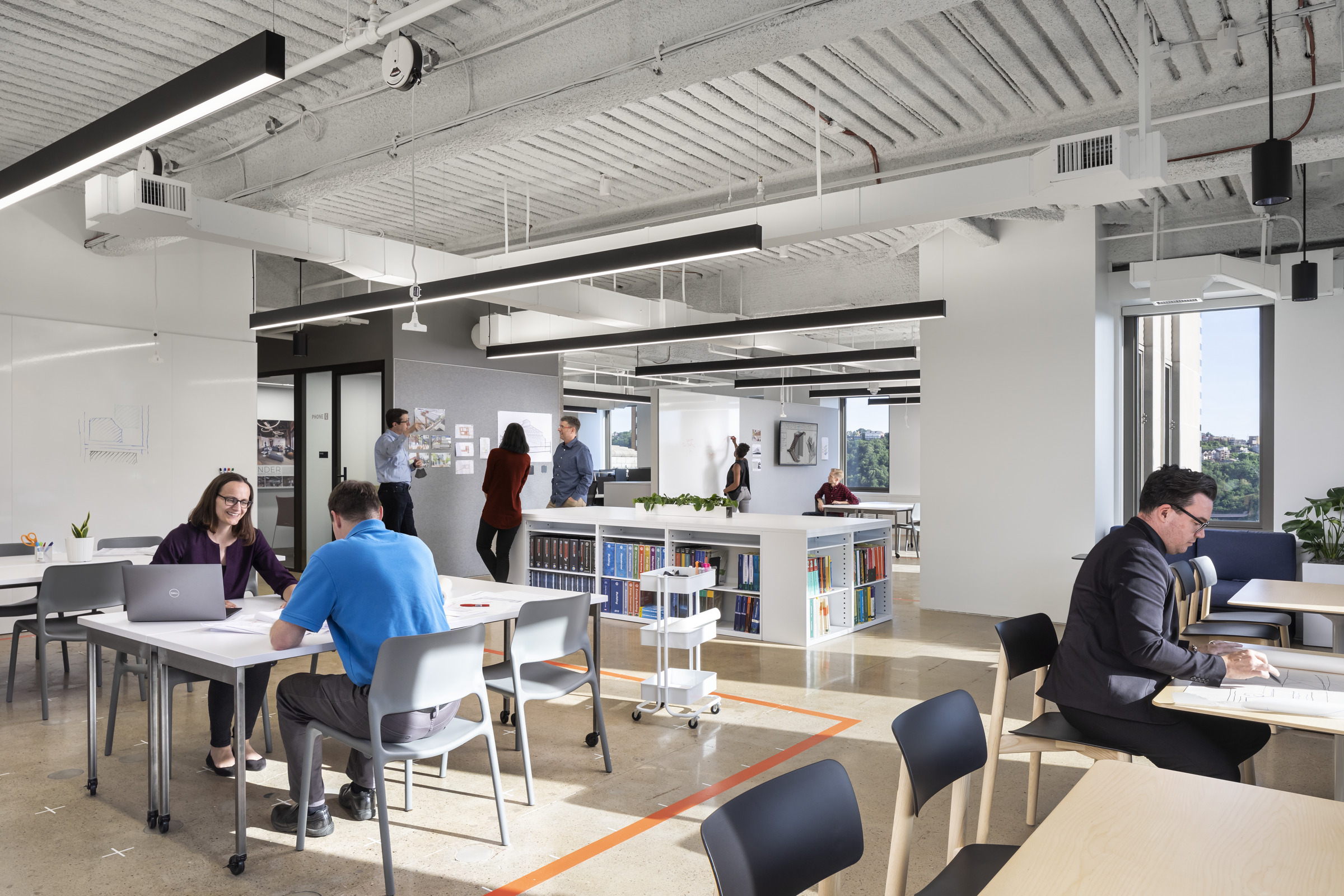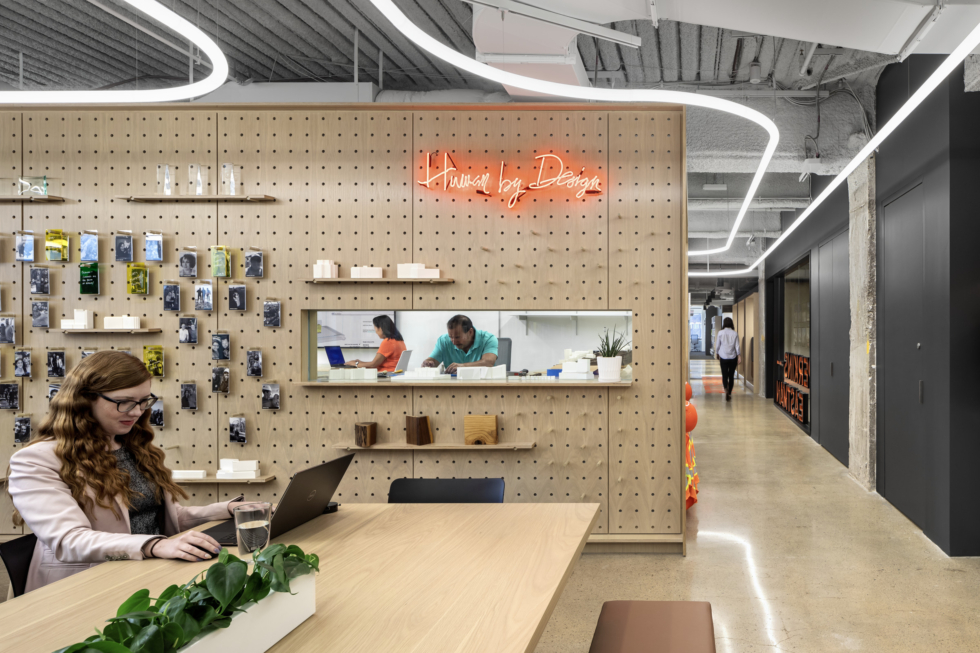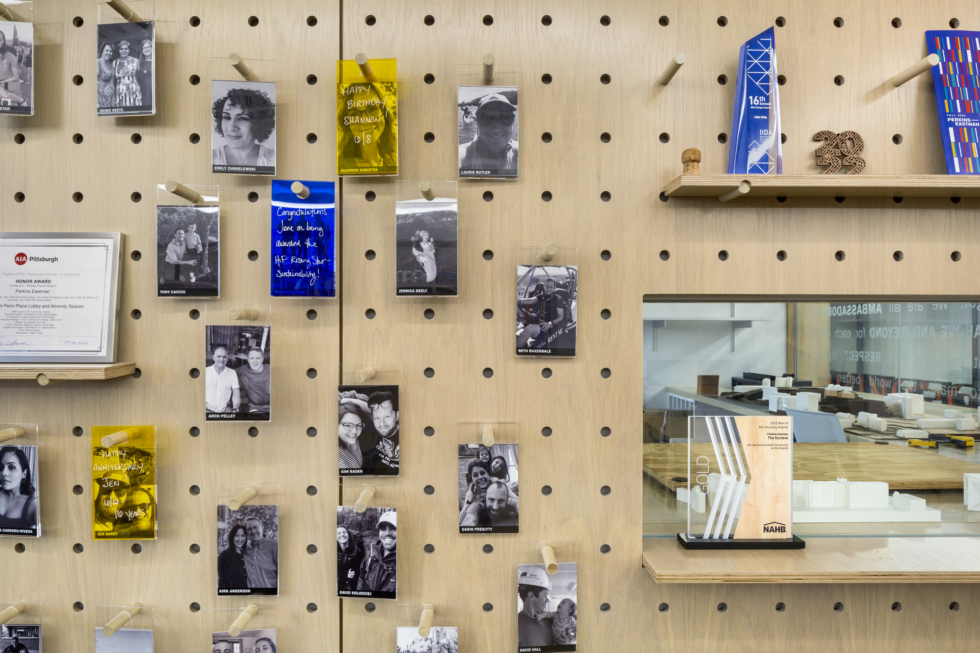Five years after the global shift to remote work, many employees find themselves in offices that feel transient and impersonal. Without a dedicated desk—a “home base”—they’ve lost a familiar anchor that once offered comfort, routine, and a sense of belonging. But this is the new normal: A new study released by Stanford reveals that remote work levels have stabilized, and in response to hybrid policies where fewer people are in the office at the same time, many companies have adopted free-address models, where desks are unassigned and shared.
This shift makes sense from a cost and space-efficiency standpoint, but it comes with tradeoffs. Moving to a different seat each day can lead to higher stress among employees, reduced focus, and a weaker connection to their work. Making matters worse, most offices today rely on open-plan layouts—environments that can amplify fatigue and burnout if not designed thoughtfully.
The result is hard to ignore: Gallup recently reported that U.S. employee engagement has hit its lowest point in over a decade, highlighting clear room for improvement in the employee experience.
We are actively engaged in research to understand how spaces we design can better support the people who use them. Funded by the 2024 ONEder Grant, our new SomePlace Like Home study explores how we can make shared workspaces more supportive and comfortable. We wanted to learn what it takes for people to thrive in the office—even without a desk to call their own.




